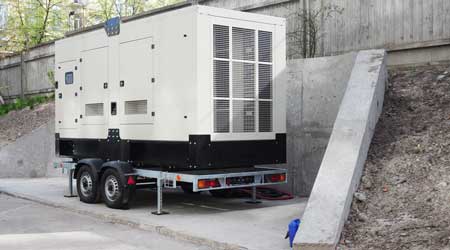3 Key Questions Managers Should Answer for Renting Generators
Generator rental can be tricky. To make sure you get what you need, create detailed specifications regarding requirements, usage, and site conditions.
Front-line technicians in maintenance and engineering departments rely on a core arsenal of equipment and tools to complete many daily tasks throughout institutional and commercial facilities. But to handle the full range of maintenance and engineering tasks, managers often supplement this arsenal with key pieces of rental equipment.
The equipment rental process can be challenging, requiring managers to gather and analyze a great deal of information before making a final selection. To help them sort through and prioritize this information, let’s focus on three important questions to answer before renting generators. The three questions:
• What physical requirements must the equipment meet?
• What controls, accessories, and documentation should the equipment have?
• What are the most important worksite conditions?
The physical properties managers need to specify when renting generators are kilowatts (kW), kilovolt amps (kVA), power factor (PF) and phase.
The cycles per second frequency is 60 for the United States and 50 cycles for most other countries. Managers need to specify motor duty cycles, or the supplier will assume continuous duty. The European IEC Standard 60034-1 lists 10 different duty cycles, including S1 for continuous duty, S2 for intermittent and S3 for periodic.
The specification also needs to state that the generator is a new and current design and describe the project’s objective, such as energy-driven standby. It also needs to state each party’s responsibility, and it should describe all parts in detail — the engine, alternator, battery charger, weather housing and the fuel system — including the capacity for desired hours run time.
Instruments to be specified include: instrument panel with a detailed description of all gages and warnings; remote annunciator indication signal type; units of measure; the number of signals included, which might be several dozen; engine start/stop controls with automatic load transfer; and the stop/start mounting location.
Accessories and miscellaneous items managers can specify include all operating and maintenance manuals with safety instructions, safety data sheets, the warranty showing components and duration, the execution of complete installation by manufacturer, and the process for submittal for approval by the owner, including checkout and test startup, operation, and automatic load transfer with stop and start.
Managers also should specify acceptable manufacturers, as well as details of the qualifications of the company supplying the equipment, whether it is the manufacturer or other party. The supplier must be factory authorized with factory-trained technicians and provide necessary transportation to expedite drop-off, maintenance trips and pickup, and it must be within designated miles radius and maintain standard parts in inventory available within a designated time 24 hours a day seven days a week.
The supplier must have a documented record of long-term support for engines, transfer controls, uninterruptible power supplies and parallel power distribution systems. The manager must have the right to send their authorized representative to inspect the supplier’s facilities and ensure they meet designated qualifications.
Thomas A. Westerkamp is a maintenance and engineering management consultant and president of the work management division of Westerkamp Group LLC.
Related Topics:










